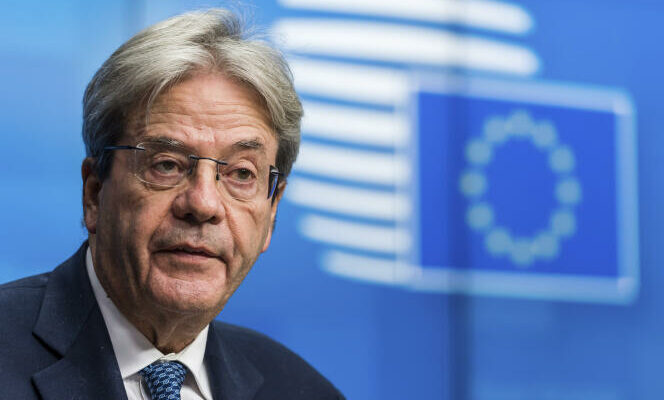Mission accomplished. The European Parliament and the Member States found, during the night from Friday to Saturday February 10, an agreement on the reform of the stability and growth pact. It will come into force from 1er January 2025, but the Commission will take it into account this year to evaluate the finances of the Twenty-Seven.
There was urgency, explains the community executive, while the current budgetary rules, almost thirty years old, apply again since 1er January, after being suspended in March 2020, in the wake of the Covid-19 crisis.
This year, a dozen member states, including France, are expected to find themselves in proceedings for excessive deficit. In this context, continues the Commission, it is unthinkable to return to the Maastricht criteria – the deficit must not exceed 3% of gross domestic product (GDP) and the debt must remain contained below 60% of national wealth – in the conditions provided for by the current framework.
“High level of debt and low growth”
In fact, in 2023, European debt represented 83% of GDP, that is to say the level it reached on average between 2015 and 2019, before the succession of crises in recent years. It is therefore not so much the deterioration of European public finances which justified haste as the inadequacies of the stability pact, the disastrous effects of which we saw during the Greek crisis.
Very complex, accompanied by very heavy and not very credible sanctions (to date, no fine has been imposed), carrying unrealistic objectives, the stability pact also has procyclical effects, by adding austerity to the slowdown of the economy. “For twenty years, not only have Europeans had a high level of debt, but their growth has also been low”repeats Paolo Gentiloni, the Commissioner for the Economy.
The Commission’s proposal, presented in April 2023, retained the totems of 3% and 60%, but it introduced elements of flexibility which should prevent the pursuit of these objectives from restricting growth and depriving governments of the means to make choices. strategic for their future.
German “guardrails”
On paper, the agreement reached preserves this philosophy. A country which does not respect one or other of the Maastricht criteria can choose, in a controlled manner, the pace of consolidation of its public finances. If it commits to reforms or investments likely to boost its growth, in green and digital transitions, for example, or to ensure its security, it will be able to benefit from three years in addition to the four planned in order to ensure the sustainability of its debt.
You have 55% of this article left to read. The rest is reserved for subscribers.
